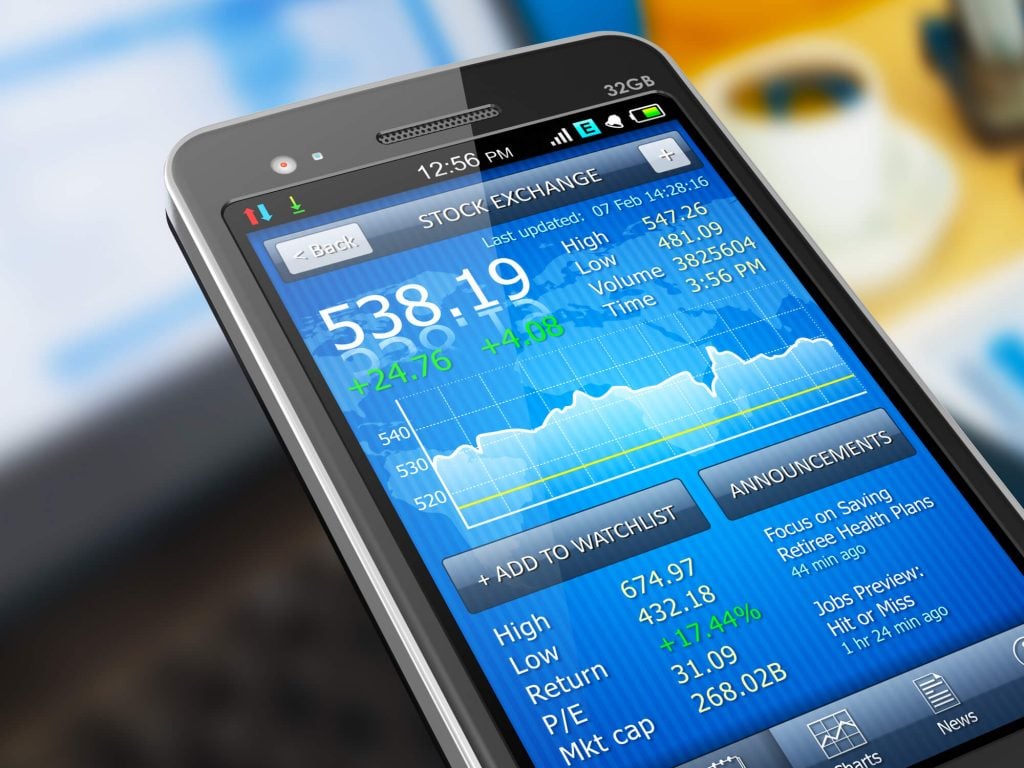Most investors are only concerned with the holdings in their own portfolios. That stands to reason: It’s their money they’re dealing with. There seems to be little need to consider what’s going on in commodities they don’t own and aren’t interested in.
But the scope of the stock market and how much it affects everyday life can seem outsized. That’s because they’re trafficking in extremely large sums of money. Wall Street’s richest investors make up a huge part of that sum. Retail investors, while they’re a growing segment of the overall investment market, make for much less.
Still, investors of all levels contribute significantly to the size of equity markets. And those markets are worth more than ever right now. Trading volume on the stock market has ramped up in the last couple of years. Money is flowing into the commodities market at elevated levels, even as some parts of the economy are experiencing a slowdown.
How much are we talking about? How much money is in the US stock market, and how much is in the global market?
We’ll take a look at what United States market capitalization means, how much the stock market is really worth, and what it all means for everyday investors.

How Do We Determine Stock Market Worth?
There are several ways to account for the size of US equity markets. Forecasters and analysts use various factors according to their objectives.
For our purposes, we’re going to define stock market worth as United States market capitalization. That is, very simply, the total market value of all the outstanding shares of a publicly-traded company’s stock. If a company has 30,000,000 outstanding shares selling at $30 each, its market cap is $900,000,000.
Believe it or not, a company worth $900,000,000 in market value is relatively small. Analysts break down market capitalization into different tiers. The Motley Fool explains the ranges like this:
· Mega-Cap: $200 billion and higher
· Large-Cap: $10 billion to $200 billion
· Mid-Cap: $2 billion to $10 billion
· Small-Cap: $300 million to $2 billion
· Micro-Cap: $50 million to $300 million
When you buy shares in a mega-cap or large-cap company (if you can afford them), you’re making a relatively secure investment. We’re talking about the Amazons, Microsofts, Apples, Walmarts, and Johnson & Johnsons of the world — “blue chip” stocks. They’ve dominated their markets for years and have weathered financial downturns successfully. They’re not going away anytime soon.
A mid-cap company may be a successful business that has established itself in the marketplace and is stable or growing. Alternately, it could be a company that used to be a large-cap stock but has declined for whatever reason, be it an overall industry downturn or competitive failure. Small- and micro-cap stocks are typically start-ups or emerging companies that are riskier to invest in but could turn out to be profitable investments.
The stock market is made up of all these tiers of market capitalization.
How Much is the Stock Market Worth?
Let’s get straight to the point. According to Siblis Research, as of March 31, 2021, the total market capitalization of the US stock market is $49,107,685,700,000. In other words, over $49 trillion.
That’s the combination of all the publicly owned companies on the NYSE and Nasdaq, plus over-the-counter (OTC) markets. Of that insanely large figure, 72% is concentrated in the top 500 companies in the US ($35,385,262,300,000).
What’s interesting about this statistic is that it’s substantially more than the current amount of cash that actually exists in the US. That’s called the M0 money supply. As of March 2021, the M0 money supply was a little over $5.8 trillion.
The reason for the disparity is that there’s a difference between hard cash and value. Stock market value relies upon people buying shares of ownership in various companies. When they experience gains or losses on their investments, they don’t gain or lose actual money. They only lose “paper” value. It doesn’t become real money until they sell their positions and cash out, taking the profit or loss then.
That’s why you have companies like Apple, whose market value is a little less than half of the entire M0 cash supply in the US. If you wanted to buy Apple today, you’d have to shell out around $2 trillion because that’s how much their outstanding shares are valued. Skip that morning latté for a couple of weeks.
What Business Sectors Are Worth the Most?
Companies on the stock exchange are divided into 11 different business sectors. For the record, they are:
· Communications Services
· Consumer Discretionary
· Consumer Staples
· Energy
· Financials
· Health Care
· Industrials
· Information Technology
· Materials
· Real Estate
· Utilities
As you might expect, some sectors have more combined market value than others. But as of May 2021, one of them clearly outpaces the other 10: Information Technology.
According to Fidelity, the total market cap for IT in May 2021 is $13.44 trillion — more than one-quarter of the entire market cap of the US stock market. It’s nearly $5 trillion more than the next most valuable sectors: Financials (banks, insurance companies, etc.) and Consumer Discretionary (hotels, vacuum cleaners, refrigerators, etc.).
The dominance of the IT sector probably doesn’t come as a surprise to a lot of our readers. The effect of the internet on everyday life rivals the effects that the automobile and television had in the 20th century. The development of the smartphone practically created a whole new industry in the form of mobile applications. Society’s reliance on electronics is now total.

How Does the US Stock Market Value Compare to Other Areas?
As of May 2021, the global stock market is worth $95 trillion. The US’s share of that total, obviously, is gigantic. Statista estimates that the US stock market commands nearly 56% of the entire worth of the global stock market. No other country even reaches 10%. Japan is closest with 7.4%.
Why does the US dominate the other equity markets? Simply put, we have the largest economy in the world. In 2019 the US’s gross domestic product was $21.4 trillion, nearly 25% of that of the entire world. China was next with $14.4 trillion.
This translates to the USA’s dominance in the stock market in that Wall Street is the investment capital in the richest country in the world. It’s the home of the two biggest stock exchanges on the planet, the NYSE and Nasdaq. (The two exchanges are physically less than a quarter-mile apart from each other in Manhattan.)
With its outsized influence, the US stock exchange drives the economy of the entire world, for better and worse. The 1929 collapse of the US stock market was one of the factors that caused the Great Depression, and its effects rippled across the seas to all other industrialized nations. Conversely, since many of the biggest tech innovators reside in the US, tech booms on the stock market influence growth in other world economies as well.
While US dominance doesn’t appear to be on the wane, and likely won’t be anytime soon, other world economies are developing into major players and could rival the US’s influences in future years. A 2021 survey led by US News and World Report revealed that the United Arab Emirates’ economy has the best prospects for future economic growth, followed by India, Egypt, Singapore, and China.
Does the Size of US Equity Markets Relate to the Overall Economy?
A funny thing happened in 2020 during the early days of the COVID-19 crisis. The stock markets dropped off sharply in March, in anticipation of a looming shutdown and its expected effects on the US economy. True to predictions, many businesses suffered severe losses, customer spending slowed down, and unemployment went up.
Yet the stock market crash turned out not to be as dire as many thought it would be. By May, according to Vox.com, the S&P 500 had recovered substantially. Less than a year later the Dow Jones Industrial Average topped 34,000 for the first time. Looking at those numbers from a distance, one would suppose that the overall economy was picking up.
But that’s not what happened. Even though the stock market was in the midst of a rebound in April 2020, unemployment in the US skyrocketed to 14.7%. It remained in double-digit territory until August. Consumer spending dropped 13.6% in April 2020. Companies with household names like JCPenney, Hertz, 24 Hour Fitness, and GNC filed for bankruptcy at some point in the year that followed.
And the stock market continued to ascend and gain in market cap. Why was that?
A few factors were contributing to the divide, according to the Vox article. The economic stimulus package of April 2020 put money in consumer’s pockets. That flooded the economy with new money and lots of liquidity. Investors felt renewed faith that the future would get better, so they put money in stocks they thought would do well in the upcoming months. That increased trading volume and sent market value back up, even though the economy was still suffering.
Investors also had little choice for opportunities to put their money into. Government bonds at the time were offering unappealingly low returns, and the shaky cryptocurrency market was in a downward trend. Stocks were the only game worth playing at the time, so that’s what investors turned to.
Many of them were new to the game: Retail investors made up a bigger share of the investment market in 2020 than ever before, and many of them signed up in the first three months of the year even as COVID-19 loomed. With nowhere to go and nothing to do, the newbies traded stocks.
These factors explain why, even though the stock market and the real-life economy are usually aligned, sometimes they’re not. Market cap is only an indication of a company’s value in terms of stock shares — if people are willing to buy them, their price will go up.
But not everybody buys stocks. In 2020, 55% of all Americans held positions in some kind of security. That means 45% didn’t, whether out of disinterest or the fact that they couldn’t afford to. In fact, in 2018, only 14% of all Americans directly owned shares in a publicly-traded company, according to financial writer Ben Le Fort.
The stock market is also driven by future expectations. People invest in certain companies because they believe they’ll return profits, whether in a few months or over many years. That doesn’t always reflect what’s happening in the present when the economy may be struggling.
The takeaway here is that the stock market is a vehicle for speculation. The economy reflects what’s happening on the street right now. The valuation of the two usually correspond, but sometimes they don’t.
What Does the Stock Market’s Overall Value Mean for You?
Most everyday people, especially those who don’t invest, get a little detached when we start talking about trillion-dollar figures like the stock market’s overall value. And to be honest, they probably have every reason to be.
In 2018, the least wealthy 80% of all households that invested owned only 6.8% of all stocks, according to Le Fort. The wealthiest 20% owned a staggering 93.2% of all stocks, and the top 1% owned almost half (40.3%). That means many Americans weren’t affected in the least by the stock market’s ups or downs.
But while the stock market’s overall value doesn’t have that much to do with what happens on Main Street, it’s a significant indicator of where things stand now, and where they might be headed. It’s a measure of how optimistic — or pessimistic — the investment community feels about the state of free enterprise.

Gorilla Trades: Wealth Builders for the Common Investor
Gorilla Trades helps retail investors survive and thrive in all market conditions. Our data-driven stock market picks are companies that are finding success today and building toward future profits. Customers who follow our recommendations enter positions at the right times and cash out when profits reach their peak. To learn more, sign up for a free trial.




